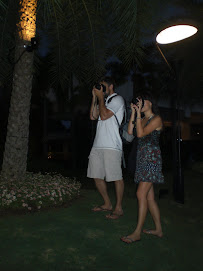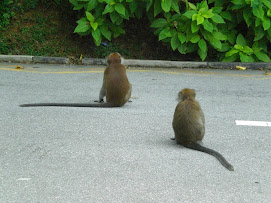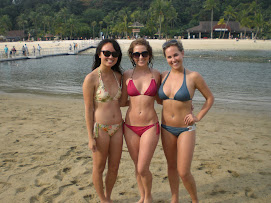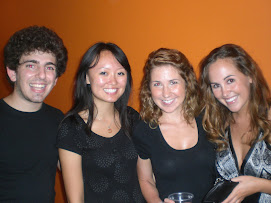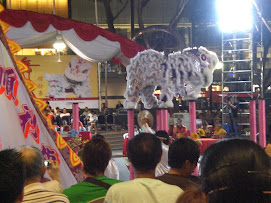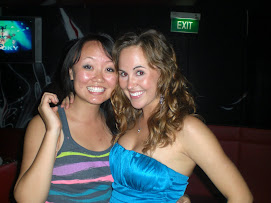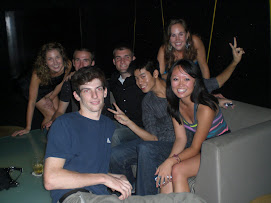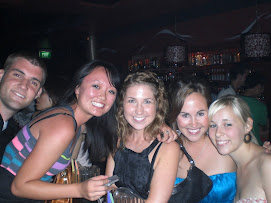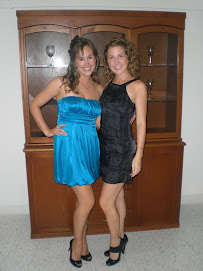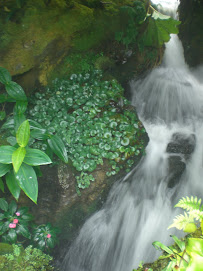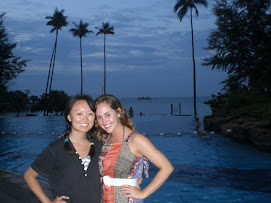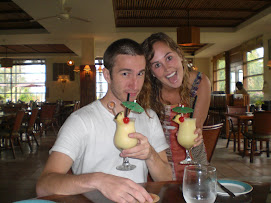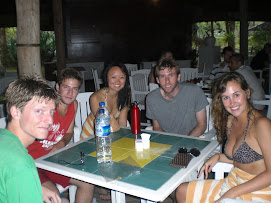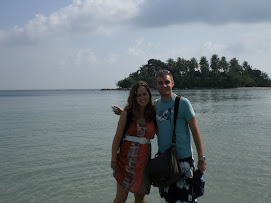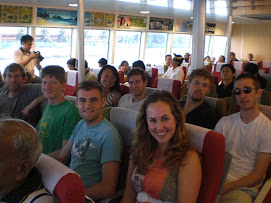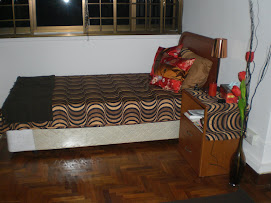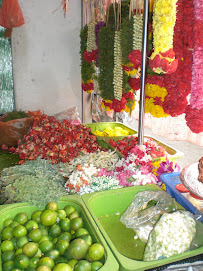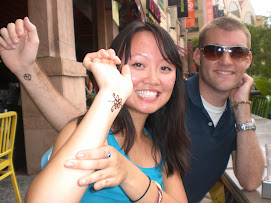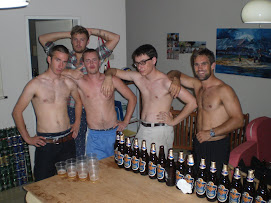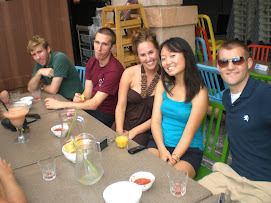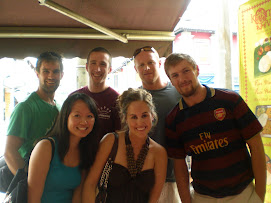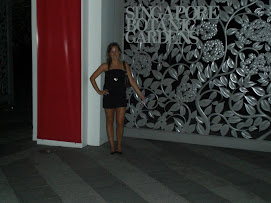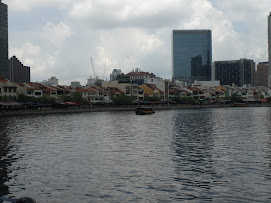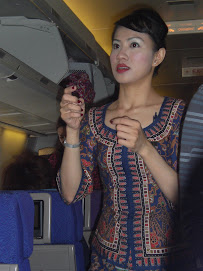They, as in the metaphorical “they” to whom everyone is always looking for advice on any number of life’s great questions, say that it is perfectly normal, in fact expected, for a person living abroad, at one time or another, to experience a sort of culture shock. “They” even have theories about how and why it occurs and can actually map the thing out. (In case you are wondering, it is in the shape of a “U” with the first peak being the honeymoon phase during which everything is, well, like a honeymoon…the best kind. The literal and metaphorical low point is the bottom where the actual culture shock in its ugliest form rears its head, and during this time one tends to reject the new culture believing that everything in his/her own culture is somehow better, right, or normal. The other peak is the adjustment when one starts to feel comfortable in a culture, and this all eventually levels off.) Most people who are on their way to spend a significant amount of time abroad are perfectly aware of this phenomenon, and many actually take precautions to reduce its effects.
I, however, had felt quite certain until recently that I had outsmarted “them.” “Their” scientific theories and U-curve graphs just didn’t apply to me. I mean I had spent three blissful months abroad in London without the slightest sensation of sliding down into the depths of the U. Culture shock? Nope, not me. Sorry guys, but I just don’t fit the mold. Reverse culture shock…maybe. (Tell me you would not experience the same when coming from London where your Friday night, if you weren’t in Barcelona, consisted of a trip to the Royal Ballet, followed by a glass of good cider, and maybe some dancing with your friends, back to a place where a big night out consisted of reading a bit of a good novel followed by upgrading from a toddler to a small cone at the Zesto if you were feeling really crazy. Not that a good book and a strawberry cheesecake twist cone don’t sound pretty good right now, but still.) Culture shock just wasn’t for me.
And I’ve been happily riding the honeymoon wave in Singapore for the last six delightful months. But this week the surf broke and I ate it...hard.
Trying to figure out which side of the sidewalk to walk on (by the way, as of yet I’ve pretty much decided that there is no logical order to this here) no longer seemed like a game. It was just annoying trying not to run into every woman who decided to stop suddenly and change directions or to maneuver my way across the street in the midst of the oncoming throng of people walking in no particularly recognizable pattern. (Side note: In college I wrote a thesis paper for an independent study about the differences between Asian and Western dance forms that arise due to cultural variations. The different ways that members of these cultures relate to space was a major section in my paper. After living in the literal space of Asia, I would definitely add a footnote to my paper now: These differences in the way we relate to space translate out of the dance studio and onto the street.)
Public caning, a form of punishment during which a boy is literally hit with a cane at the school assembly, no longer seemed like an imaginary archaic Singaporean stereotype, when my roommate sent me a shocked message one day because she had witnessed one such event at school.
“Can” or “cannot” are not now, nor have they ever been, normal or acceptable answers. “Yes” or “no” are appropriate answers to most questions. (“They” would diagnose my culture shock immediately here upon seeing the use of the words “not normal” to describe my reaction to a culture other than my own.) And while we are on the subject of proper English, my name is Ms. Rachel, not “cher” (short for “teacher,” which, by the way, is also not acceptable for middle school students to be calling me.)
Here, I would like to take a quick pause from my crazed culture shock rant and return to my normally culturally sensitive, optimistic self to make a quick note about the can/cannot phenomenon. “Can” and “cannot” have found their way into the everyday language of Singaporeans not because Singaporeans wish to intentionally speak poor English. (In fact, for many of them, speaking proper English is one of their top priorities, and I often notice how self conscious some of my Chinese or Malay-speaking colleagues are when they are speaking to me, a native English speaker. They need not worry about me being judgmental, however. Considering that if I tried to speak to them in Mandarin our conversation would be limited to “thank you,” “hello,” “don’t want,” and “make it cheaper” their ability to communicate so well in their second language is really quite incredible.) In Chinese Mandarin, there is actually no word that can be translated to mean the direct “yes” or “no” that we use in English. (This may explain why it is often so hard to get a direct answer about many things here.) But rather, when Chinese people want to say “yes” or “no” to something they respond with words that can be translated into English meaning, of course, “can” and “cannot.”
And now back to your regular programming:
And, after all this, when you go to the doctor and spend a solid five minutes explaining your medical history only to be told you need to repeat everything much more slowly, because he could not quite understand your accent (Hello, why didn’t you interrupt me four minutes and 28 seconds ago to tell me that?), you tend to look like a complete crazy person who should be a the doctor for mental health issues rather than a skin irritation when you break into a bout of uncontrollable sobbing…and we’re not talking glistening tears cascading down soft fleshy cheeks here but rather the gasping for air, blotchy, red face, high pitched voice, slobbery kind of bawling.
It’s been a rough week.
Looking back on it all, though, as I sit here contentedly, I dare to say almost happily, sipping a mango fruit tea at the Coffee Bean in Holland Village I have to admit it isn’t all that bad. Walking dilemmas, communication misunderstandings, corporal punishment, public displays of insanity all considered, I have actually managed to chuckle a few times in the last couple hours. I mean, just picturing myself at the doctor’s office all blotchy-faced, sporting a skin irritation that looked like a reverse Kool Aid mustache, blubbering away for some unexplained reason to the poor doctor who could not even understand what I was saying has conjured images of comedy sitcom re-runs. Alas, this is my life in Asia.
And now, at the risk of sounding like a completely bizarre, bipolar, schizophrenic, crazy person, I’m going to proceed by sharing the details of the wonderful Chinese New Year holiday trip I took to Kuala Lumpur, Malaysia last week.
At 11:30 p.m. on a Saturday evening, Steph and I boarded a bus for our five hour long journey to Kuala Lumpur, Malaysia where, upon arrival at 5 a.m., we proceeded to have breakfast at, where else, but McDonalds. Three hours, two egg muffins, and eight and a half cups of coffee later we were checked into our hostel, majorly hopped up on caffeine, and on our way to complete a walking tour of Chinatown, Little India, and the colonial district.
Walking through dazzlingly ornate red and gold temples, weaving through the Chinese New Year worshippers ceremoniously burning prayer flags and lighting candles in the already fiery morning air, watching the rising sun catch and dance upon the billowing incense while small children move like ghosts, silent, graceful, mysteriously serene, between and around the spirit world, a part of the incense itself, is nothing but other-worldly…appropriately so, I suppose, considering the setting.
But upon transcending into the spirit world, Steph and I were quickly brought back down to Earth when we realized that we were being followed through the market by two men who seemed rather intent on ruining our meditative happiness by snatching our hand-bags. Fortunately, Steph and I are both veteran travelers at this point and had our money safely stored closer to our person than in our vulnerable hand-bags. In addition, when we made the gentlemen aware that we knew perfectly well they were following us, they became bored with their prey and moved on. To shake the sort of jitters that always seem to accompany this sort of situation, though, Stephanie and I sought refuge, and a quick break in yet another of America’s proud exports…KFC.
From the lively and spirit-filled temples of Chinatown, we made our way to the tranquil oasis of the Masjid Jamek, KL’s landmark mosque. Set in a grove of palm trees in the middle of the bustling city this mosque, a lovely creation of creamy onion-shaped domes and towering minarets, provides refuge from the many crowded tourist attractions in the surrounding area. Clothed in floor-length robes, hair covered in the appropriate scarves, we wandered in complete silence appreciating not only the impeccable architecture but also the surreal calm that seemed to blanket the mosque, tucking it deep into its soft folds.
From the mosque, we visited the colonial district and Merdeka (Independence) Square, where at midnight on 31 August, 1957 Malaysia’s independence was proclaimed. The flag pole that anchors the square is one of the tallest in the world, displaying Malaysia’s flag at an impressive 100 meters high. Our last adventure for the morning was conquering the maze-like streets of Little India where a bazaar atmosphere is only enhanced by the street vendor’s sweet smelling flower garlands and the scent of secret family curries wafting from the small Indian cafes placed mosaic-like among the fabric and tapestry shops.
The afternoon was spent enjoying a slow, four-course Lebanese meal at the Islamic Arts Museum, which was, and I am not exaggerating in the least bit when I say this, the best meal I have eaten in Asia, if not in my life. A spread of mezze-esqu appetizers including hummus, baba ganoush, pickled vegetables, eggplant, pita bread, and crisp salad was followed by wheat germ soup. The main course, a saffron-glazed salmon with couscous and lemon vinaigrette tossed salad, was as good as it sounds and better. And Stephanie and I literally cried tears of joy, (this time they were the glistening tears cascading down fleshy cheeks though) when we tasted the baklava, a rich, sweet pastry made of layers of phyllo dough and filled with chopped, sweetened pecans.
Stuffed like turkeys at Thanksgiving and tired like we had been awake since 11:30 the previous evening, which, with the exception of some sporadic, uncomfortable bus dozes, we had, Stephanie and I went back to our lovely little hostel for a much needed nap. Then, this day being not only Chinese New Year but also Valentine’s Day, we headed out on the town to experience all that KL’s nightlife had to offer. A quick drink (roses included) in a place reminiscent of Alice’s mad tea party, Tiff’s Jazz Bar, was followed by live music and finally a roof top bar with a spectacular view of the Petronas Towers. These landmark buildings were the tallest in the world until 2003, and the 88-story, steel-clad twin towers remain the city’s iconic symbol today.
The morning of day two was spent doing what any true and good Singaporean (or, in my case, person who has spent enough time in Singapore to internalize some of the culture) would do…shopping, of course.
In the early afternoon, we joined a guided tour for an out-of-town excursion to the nearby fishing village of Kuala Selangor. During the trip, our guide, Stevie ("as in Wonder" as he put it), took us first to visit the monkeys atop Bukit (meaning “hill” in Malay) Malawati. There we enjoyed views across the mangrove coastline as well as seeing the remains of the old Dutch fort and the British lighthouse that still dominate the hill. We, along with the Australian family of four generations and a young Kazakhstani backpacker who were also on our tour, enjoyed taking candid shots with the stars of the show: the silvered leaf monkeys (see Picasa photos here).
Our sunset diner consisted of salted crab, crab stew (actually imitation shark’s fin soup; see an earlier blog entry here for my not-so-subtle opinion about the actual shark’s fin delicacy), vegetables, rice, and prawns all served family style at a restaurant that was actually standing in the water. Moments before our meal, we watched a group of fishermen haul in the day’s catch. It doesn’t get much fresher than this.
As the evening settled comfortably in around us, we made our way to watch the fireflies gather for their nightly ritual in the berembang trees that line the banks of the Sungai Selangor river. Malay-style wooden rowboats took us out to enjoy the natural light show during which male fireflies flash roughly every three seconds in a unified call and effort to preserve their bloodline.
As our boat cut swiftly through the black water, our way lighted by these insect stars so close I could have reached out and pulled them from the sky, I was transported back in time to one far away Iowa summer. Suddenly, I was an innocent eleven years old again, scouring my aunt and uncle’s backyard for a similar creature to capture in a jar for a nightlight. Wonderfully, strange isn’t it…the tapestry that our memories weave.
Here I physically was in a wooden rowboat on a river in Malaysia, yet, for several quiet moments, I am mentally at total peace in the place of my childhood innocence, running barefoot, squishing the cool summer grass between my toes as I reach out in a vain attempt to capture the little lightening bug in my smooth, old jam jar. When I am finally ready to give up, my uncle takes the jar and swiftly, with expert hands that only come from many years of boyhood practice, maneuvers a little flickering spark into the glass vessel and closes it tightly shut. We walk hand-in-hand back to the porch and say goodnight to Nicodemus the visiting toad. Sometime after I fall fast asleep, the glow of the little bug still dancing on the back of my eyelids, my uncle sneaks into the room and frees the creature into the night. Then, as quickly as it came, it is gone. Both the bug and the memory.
And if Steph and I hadn’t had enough of America’s finest exported products, we stopped for an A&W root beer float before settling into firefly dreams back at the hostel.
The third and final morning of our trip was spent visiting the Blue Mosque (aka Masjid Sultan Salahuddin Abdul Aziz Shah, which is why I will be referring to it as the Blue Mosque from here on out). The Blue Mosque is located just outside of KL in a staunchly Muslim city where bars, amongst other sins, are illegal. The Blue Mosque is aptly nicknamed for the azure dome covered in delicately written verses of the Quran. It is one of the largest mosques in South East Asia, capable of accommodating 24,000 worshippers at once, and boasts some of the tallest minarets in the world.
While many people find their meditative states in yoga studios or in quite Ashrams in small Indian villages, I feel mine is best achieved in the beautiful places of religious serenity to which I’ve been exposed on my travels. Regardless of the specific religious creed, I seem to find the most solace, and to achieve the most calm in my soul (and for those of you who know me and my oh-so-restless soul, you know this is quite the feat) in lovely temples, tranquil mosques, and grand cathedrals the world over. Again my mind races back to a time of pure bodily peace as I sat in the small cathedral of Christ's blood in Brussels, Belgium several years ago floating in a cloud of calm so other-worldly that it may as well have been an out-of-body experience.
Before returning to Singapore, there was one final task which had to be accomplished, and that was the finding and the consumption of Nyonya laksa. Laksa is a popular spicy noodle soup from Peranakan culture, also known as Baba Nyonya, which is a merger of Chinese and Malay elements found in Singapore, Indonesia and Malaysia. Nyonya, or lemak, laksa is a type of laksa made with rich coconut gravy. Lemak is a culinary description in the Malay language which specifically refers to the presence of coconut milk which adds a distinctive richness to a dish. Nasi lemak, for example, is coconut rice.
The three days of school last week flew by in a sort of “still full from Chinese New Year food but let’s eat more anyway” blur, during which I indulged in more yu sheng salad with my colleagues. The weekend was spent recovering (sort of) from the food and travel induced coma with a dinner date for yet more lucky salad with my induction mentor, Mrs. Tan, Jayme, Jeremy, and Steph. A reggae concert at which our friend, Aaron, made his debut as the band’s trombonist was another of the highlights.
On Sunday, I attended the “coming out” party of my co-worker’s one-month-old grandson and his mother. Many traditional Chinese rituals and customs surround pregnancy and childbirth. (To be completely honest, it seems, many traditional Chinese rituals and customs surround almost everything in life (see “heaty/cooly” foods blog entry here).) But nonetheless these rituals range from the belief that pregnant women should guard their thoughts, avoid gossip, and read poetry to the idea that if a woman eats light-colored food during pregnancy, her child will have fair skin. Often a strong herbal potion is drunk to ease the pain of labor, and strict rules regarding food preparation and exercise are followed both during pregnancy and after birth.
In addition, traditionally Chinese women and their newborns "sit the month" after birth. The website “Medical Chinese” from NYU explains: “Depending on regional differences, women may not leave their homes, take a bath, wash their hair, expose themselves to cold water, cold temperatures and wind, or ingest ice water or "cold" food (raw vegetables, salads or fruits) in the first month after giving birth. It is believed that women are undergoing a cold stage right after delivery due to loss of blood. In order to restore balance, they need to consume foods considered "hot" (i.e. hot water, soups, ginger, wine and food high in protein).”
Being a part of the new mother’s and baby’s presentation to the world after this period of “sitting” was an exciting, and culturally eye-opening experience.
Despite a rough start to the week, which started out with a sick day on Monday to recover physically from the aforementioned reverse Kool Aid mustache and mentally from feeling a bit homesick, I’ve actually felt really quite successful as a teacher this week. I guess part of that success comes from the fact that I am teaching news article writing to my classes right now (sort of my forte), but I also like to think I’m just getting better at this whole teacher (“cher”) thing.
Because I began this blog entry with a sort-of crazy pessimistic rant, I think it only appropriate (and important for my own sanity) that I end with a list of blessings for which I am thankful this week:
1.) My students, who are more excited about the learning journey on which I am taking them next week to the National Museum of Singapore than I could have ever expected a group of 13-year-olds to be; sometimes their innocent curiosity and naïve wonderment of the world around them really touches my heart.
2.) My roommate, who, after hearing me complain that “for the next ten days while on this antibiotic I cannot eat seafood, eggs, or drink alcohol…the only good thing left is chocolate”…proceeded to surprise me with three large Cadbury chocolate bars after school one day. (The giant bars, due to my upcoming Bali trip, have been safely tucked in the back of a drawer, and will be removed for only one small morsel here and there.)
3.) My co-workers, who, despite occasional misunderstandings, really do try to understand the weird American teacher and who have been nothing but caring and concerned after my bout of sick leave.
4.) My family, especially my mom, who listened to me rant about how terrible this tropical paradise of a life is, over the phone one morning at 7 a.m. her time while she could have been getting ready to go to work...in a blizzard, no doubt.
5.) My good (despite the occassionaly weird skin irritation) health.
6.) My upcoming spring-break vacation to Bali and additional week spent in Singapore with Tim.
Yes, life is not so bad after all.
TIA,
Rachel
Wednesday, February 24, 2010
Saturday, February 20, 2010
A few pictures to tide you over...
A blog post for my Kuala Lumpur, Malaysia trip is coming, but to tide you over in the meantime in case the suspense is too great here are the pictures:
http://picasaweb.google.com/rachelknutson.knutson8/KualaLumpurAdventures#
There are also a few more pictures from Chinese New Year celebrations in this album:
http://picasaweb.google.com/rachelknutson.knutson8/YearOfTheTiger#
http://picasaweb.google.com/rachelknutson.knutson8/KualaLumpurAdventures#
There are also a few more pictures from Chinese New Year celebrations in this album:
http://picasaweb.google.com/rachelknutson.knutson8/YearOfTheTiger#
Wednesday, February 10, 2010
Year of the Tiger
Here is just the beginning of many Chinese New Year celebration pictures to come, and, of course, of my own little tigress in this, the year of the tiger:
http://picasaweb.google.com/rachelknutson.knutson8/YearOfTheTiger#
http://picasaweb.google.com/rachelknutson.knutson8/YearOfTheTiger#
Tossing Luck
What do you get when you add abundance to luck, throw in a pinch of wealth and a dash of prosperity, fold in wishes for riches, and, just for the heck of it, mix in some eternal youth?
A salad, of course…and not some metaphorical “recipe for success” kind of salad, but a literal vegetables and dressing, you can eat this for lunch and not feel guilty about it, girls’ night out kind of salad.
Yu Sheng, literally meaning “raw fish” but which can be interpreted to mean “abundance (fish) of wealth and long life (raw),” is a salad that is traditionally served during Chinese New Year. More specifically, it is often served on the seventh day of the New Year festivities, Ren Ri, or “Everyman’s Birthday.” This is one tradition I can definitely relate to: I mean who doesn’t want 15 days of New Year celebrations, the seventh of which is your second birthday of the year on which you get to eat abundance of wealth and long life for lunch?
And these literal keys to riches and eternal youth?-nothing but raw salmon symbolizing abundance and excess throughout the year which is mixed into green radish, eternal youth, white radish, prosperity in business and promotion at work, and shredded carrot, blessings of good luck. A bit more luck is added with the pomelo, a grapefruit-like fruit. Then, the whole thing is topped with peanuts symbolizing a household filled with gold and silver, a dash of pepper in hopes of attracting yet more money and valuables, cooking oil and plum sauce to smooth everything together, and finally, deep-fried flour crisps in the shape of golden pillows are added with wishes that literally translate to mean “may the whole floor be filled with gold.” Greedily hungry yet? Don’t get too excited, I haven’t even gotten to the best part.
When all the ingredients are both literally and metaphorically “on your plate,” the fun really begins. Chopsticks in-hand, even as you hear your mother’s voice clearly ringing in your ear telling you not to, you proceed to make a glorious mess by throwing this lovely salad in the air with bits and pieces landing all over the table all the while shouting “lo hei,” tossing luck, and other auspicious New Year wishes. The ingredients are mixed further by pushing them toward the center, an encouragement to push on the good luck of all at the table. Yes Mom, I know I’m not supposed to play with my food, but Yu Sheng lunch with my mentor and Stephanie last weekend was about the most fun I’ve ever had eating in my life.
I had certainly worked up an appetite for the lunch as Saturday morning was spent in the classroom. But this time, I was not the teacher but the student learning all about the use of video in the English Language classroom. Teachers in Singapore are required to take two courses a year, and the combination of media and English seemed to be right up my alley.
After lunch, my mentor, Yui Yun, and I went to the National Museum of Singapore where we spent three lovely hours in this incredibly architecturally impressive building wandering through the Singapore history exhibit, the food gallery (only in Singapore), the fashion gallery, and the visiting Quest for Immortality Egyptian mummy gallery. I wound down my evening with a stroll through Ft. Canning park, a place where Sir Thomas Stamford Raffles, the founder of Singapore, built his home. The hilltop home was later replaced with a fort, which proved to be useless protection as the cannons could not reach as far as the harbour, Singapore’s weakest spot, so it was demolished. It is now a quiet hillside park complete with beautiful running trails and a Gothic gate that is all that remains of the fort.
My Sunday was similarly peaceful. I spent the good part of four hours hiking along Singapore’s southern ridges, a coastline trail of bridges, paths, and canopy walks that seamlessly connect four parks, completely losing myself in nature and in my mind. I stopped for frozen yogurt before I joined Ana, Jenny, Mark, and Trevor for a movie in there apartment.
The remainder of my free time this past weekend was spent cuddling with my new furry friend, Ella, a kitten that Stephanie and I adopted on Friday night after spotting her on Craigslist.com, of all places. Ella is just over a year old, tiny, independent, really affectionate, and perfectly content prancing around like the diva she is in her black rhinestone collar in Steph’s and my three bedroom apartment where she spends her time, when she isn’t sleeping or cuddling, keeping our wildlife situation under control, geckos, bugs, and all.
It is also nice to have someone to come home to when the school days seem particularly long. Monday and Wednesday were wonderful days at school during which my lessons went smoothly, my kids seemed to be paying particularly close attention (although many of them have probably perfected the art of sleeping with their eyes open as I had definitely done by the time I was 14), and I had even had the opportunity to work with the percussion group on choreography for their upcoming performance. Memories of choreographing Riggs High’s indoor marching band concert certainly came flooding back.
Tuesday, on the other hand, was another story. Let’s just say, I started the day by spending the entire 30 minutes of one music lesson scolding my kids about their lack of respect for authority and ended it by locking myself out of my house with no way to get in until Stephanie returned three hours later. Everything in between wasn’t much better.
It’s on days like this that you really have to search for things to be thankful for. In all honesty, though, it is often only on days like this that we really think about what we have for which we can be thankful. I certainly don’t go around pondering my blessings when having one of those “I’m riding cloud nine through my rainbow painted sky licking an ice cream cone" days. So maybe something good can come of it a bad day after all.
My thankful list on Tuesday certainly wasn’t made out of a true desire to remind myself of all the wonderful blessings in my life, though it did eventually end up doing just that. My effort was rather made to prevent myself from spinning into a mad rage or bursting into tears in public.
Here is what I came up with in the three hours I had to reflect:
1.) Sometimes these consistent 95 degree temperatures really suck (especially in the button down shirt and long suede skirt you wore to work), but at least it doesn’t snow here.
2.) You can make a full dinner out of two thosai, an Indian flatbread served with curry or chutney dipping sauces, and a beer for only five dollars. (which is necessary because you only have five dollars and no credit card with you at the moment and you really need a beer more than you need a fruit juice right now)
3.) Your compulsion to constantly put a book in your purse can be quite a nuisance at times, especially when you don’t even have time to read it and it gets in the way of finding your phone, camera, keys (if you happen to have them), chap-stick, and whatever else is buried under the book, but thank God for it now.
4.) Eating alone in a restaurant is really quite liberating, and it is good to spend some quality time with yourself. Eating alone at a Hawker Center surrounded by old Chinese men who are swigging pint after pint of beer and staring at you in a way that implies either they have never in their lives seen a girl alone in a Hawker Center drinking a beer or that you have a giant sign tattooed on your forehead that says “Stare at me Awkwardly Please” (I would guess it is the former), is just strange but slightly amusing.
5.) After this experience, you will probably never lock yourself out of your house again. Congratulations, you learned your lesson.
This weekend should bring more Chinese New Year and Yu Sheng salad adventures and, hopefully, a lack of locking myself out of my house adventures as Steph and I are off to Kuala Lumpur, Malaysia for our Chinese New Year break that extends through Monday and Tuesday.
Cheers, Happy Year of the Tiger (almost), and TIA,
Rachel
A salad, of course…and not some metaphorical “recipe for success” kind of salad, but a literal vegetables and dressing, you can eat this for lunch and not feel guilty about it, girls’ night out kind of salad.
Yu Sheng, literally meaning “raw fish” but which can be interpreted to mean “abundance (fish) of wealth and long life (raw),” is a salad that is traditionally served during Chinese New Year. More specifically, it is often served on the seventh day of the New Year festivities, Ren Ri, or “Everyman’s Birthday.” This is one tradition I can definitely relate to: I mean who doesn’t want 15 days of New Year celebrations, the seventh of which is your second birthday of the year on which you get to eat abundance of wealth and long life for lunch?
And these literal keys to riches and eternal youth?-nothing but raw salmon symbolizing abundance and excess throughout the year which is mixed into green radish, eternal youth, white radish, prosperity in business and promotion at work, and shredded carrot, blessings of good luck. A bit more luck is added with the pomelo, a grapefruit-like fruit. Then, the whole thing is topped with peanuts symbolizing a household filled with gold and silver, a dash of pepper in hopes of attracting yet more money and valuables, cooking oil and plum sauce to smooth everything together, and finally, deep-fried flour crisps in the shape of golden pillows are added with wishes that literally translate to mean “may the whole floor be filled with gold.” Greedily hungry yet? Don’t get too excited, I haven’t even gotten to the best part.
When all the ingredients are both literally and metaphorically “on your plate,” the fun really begins. Chopsticks in-hand, even as you hear your mother’s voice clearly ringing in your ear telling you not to, you proceed to make a glorious mess by throwing this lovely salad in the air with bits and pieces landing all over the table all the while shouting “lo hei,” tossing luck, and other auspicious New Year wishes. The ingredients are mixed further by pushing them toward the center, an encouragement to push on the good luck of all at the table. Yes Mom, I know I’m not supposed to play with my food, but Yu Sheng lunch with my mentor and Stephanie last weekend was about the most fun I’ve ever had eating in my life.
I had certainly worked up an appetite for the lunch as Saturday morning was spent in the classroom. But this time, I was not the teacher but the student learning all about the use of video in the English Language classroom. Teachers in Singapore are required to take two courses a year, and the combination of media and English seemed to be right up my alley.
After lunch, my mentor, Yui Yun, and I went to the National Museum of Singapore where we spent three lovely hours in this incredibly architecturally impressive building wandering through the Singapore history exhibit, the food gallery (only in Singapore), the fashion gallery, and the visiting Quest for Immortality Egyptian mummy gallery. I wound down my evening with a stroll through Ft. Canning park, a place where Sir Thomas Stamford Raffles, the founder of Singapore, built his home. The hilltop home was later replaced with a fort, which proved to be useless protection as the cannons could not reach as far as the harbour, Singapore’s weakest spot, so it was demolished. It is now a quiet hillside park complete with beautiful running trails and a Gothic gate that is all that remains of the fort.
My Sunday was similarly peaceful. I spent the good part of four hours hiking along Singapore’s southern ridges, a coastline trail of bridges, paths, and canopy walks that seamlessly connect four parks, completely losing myself in nature and in my mind. I stopped for frozen yogurt before I joined Ana, Jenny, Mark, and Trevor for a movie in there apartment.
The remainder of my free time this past weekend was spent cuddling with my new furry friend, Ella, a kitten that Stephanie and I adopted on Friday night after spotting her on Craigslist.com, of all places. Ella is just over a year old, tiny, independent, really affectionate, and perfectly content prancing around like the diva she is in her black rhinestone collar in Steph’s and my three bedroom apartment where she spends her time, when she isn’t sleeping or cuddling, keeping our wildlife situation under control, geckos, bugs, and all.
It is also nice to have someone to come home to when the school days seem particularly long. Monday and Wednesday were wonderful days at school during which my lessons went smoothly, my kids seemed to be paying particularly close attention (although many of them have probably perfected the art of sleeping with their eyes open as I had definitely done by the time I was 14), and I had even had the opportunity to work with the percussion group on choreography for their upcoming performance. Memories of choreographing Riggs High’s indoor marching band concert certainly came flooding back.
Tuesday, on the other hand, was another story. Let’s just say, I started the day by spending the entire 30 minutes of one music lesson scolding my kids about their lack of respect for authority and ended it by locking myself out of my house with no way to get in until Stephanie returned three hours later. Everything in between wasn’t much better.
It’s on days like this that you really have to search for things to be thankful for. In all honesty, though, it is often only on days like this that we really think about what we have for which we can be thankful. I certainly don’t go around pondering my blessings when having one of those “I’m riding cloud nine through my rainbow painted sky licking an ice cream cone" days. So maybe something good can come of it a bad day after all.
My thankful list on Tuesday certainly wasn’t made out of a true desire to remind myself of all the wonderful blessings in my life, though it did eventually end up doing just that. My effort was rather made to prevent myself from spinning into a mad rage or bursting into tears in public.
Here is what I came up with in the three hours I had to reflect:
1.) Sometimes these consistent 95 degree temperatures really suck (especially in the button down shirt and long suede skirt you wore to work), but at least it doesn’t snow here.
2.) You can make a full dinner out of two thosai, an Indian flatbread served with curry or chutney dipping sauces, and a beer for only five dollars. (which is necessary because you only have five dollars and no credit card with you at the moment and you really need a beer more than you need a fruit juice right now)
3.) Your compulsion to constantly put a book in your purse can be quite a nuisance at times, especially when you don’t even have time to read it and it gets in the way of finding your phone, camera, keys (if you happen to have them), chap-stick, and whatever else is buried under the book, but thank God for it now.
4.) Eating alone in a restaurant is really quite liberating, and it is good to spend some quality time with yourself. Eating alone at a Hawker Center surrounded by old Chinese men who are swigging pint after pint of beer and staring at you in a way that implies either they have never in their lives seen a girl alone in a Hawker Center drinking a beer or that you have a giant sign tattooed on your forehead that says “Stare at me Awkwardly Please” (I would guess it is the former), is just strange but slightly amusing.
5.) After this experience, you will probably never lock yourself out of your house again. Congratulations, you learned your lesson.
This weekend should bring more Chinese New Year and Yu Sheng salad adventures and, hopefully, a lack of locking myself out of my house adventures as Steph and I are off to Kuala Lumpur, Malaysia for our Chinese New Year break that extends through Monday and Tuesday.
Cheers, Happy Year of the Tiger (almost), and TIA,
Rachel
Thursday, February 4, 2010
Gone to the Birds
Follow the link for pictures at Singapore's Sungei Buloh wetlands:
http://picasaweb.google.com/rachelknutson.knutson8/WetlandAdventures#
It seems no matter what you do to prevent it, school picture day just somehow goes horribly wrong. No amount of Clean and Clear, no preventative face mask applied religiously for a whole week before, not even the homemade toothpaste, zit zapper concoction that your grandma promises “works every time” will prevent the red bump from rearing it’s ugly head smack dab in the middle of your forehead on the morning of the dreaded photos. Nor will you ever be granted the gift of a good hair day on that one particular morning even if you’ve enjoyed twelve consecutive days of perfectly messy, beachy waves for the entire previous week and a half running. Don’t even bother wishing for a Cameron Diaz-esque glowing tan that day as your summer color will have already faded, your bronzer will inevitably run out, and you will put so much blush on to overcompensate that you’ll end up looking more like Bozo the Clown than Ms. Diaz. You will have a bad hair day and a muddled complexion, and you will never pick out that perfectly complimentary color for your skin tone. I’m not being negative. I’m being honest. It is a fact of life.
Luckily, for many of us, after twelve years we graduate from high school and leave school picture days behind for the less fortunate youngsters to tolerate until their time comes. We bury the evidence in dusty school yearbooks tucked safely behind the Reader’s Digest collection and family photo albums. And, except for the occasional rediscovery of an old, stray school photo that escaped the attempt to cover the trail tucked deep down in Dad’s wallet, we never look back. That is, until you move to Singapore to become a secondary school teacher for 16 months.
Then you wake up with a fuzz ball of matted, slept on hair that refuses to do anything but cling to your face on one side and stick out in every direction but down on the other. At 23-years-old you have been fooled into thinking you have outgrown your hormonal adolescent days only to be greeted, when you take that first glance in the mirror, by a zit that vaguely resembles Mount Vesuvius on your chin. You have almost scrapped out the last of your bronzing powder in a country that markets all face products as “whitening” and nothing you own seems to look right. Yep, must be school picture day.
Despite the disastrous morning, I did somehow manage to survive the day, but came out with, no doubt, another one of those “flattering” school photos which will, upon claim, be tucked into the deepest, darkest corner of a shoe box and hidden safely under the guest room’s bed only to be found and hurriedly hidden away again once a year during spring cleaning.
One of the many “privileges” I have been enjoying as a secondary school teacher has been the re-living of many of these once-in-a-lifetime-experiences…twice. I have, for example, taken part in a graduation ceremony, accompanied students on several school field trips, helped ‘first years’ who are unexplainably lost and wandering around the school to find their way to their classrooms, and, of course, had the joy of experiencing yet another school picture day. Not all of these experiences, of course, are comparable to school picture day in that most were much more enjoyable. For example, just last Monday I accompanied the Secondary One students to the Commonwealth School Band Concert, where I was reminded of my days as a trombonist in the Riggs High School band, particularly during the “Pirates of the Caribbean” movie re-mix.
I have been fortunate to be spending quite a lot of time at Singapore’s premiere performing arts venue, the Esplanade, in that in course of the last couple weeks, in addition to the school band concert, I’ve been able to attend “Men in Tutus,” an all male comedy ballet by the internationally acclaimed company Les Ballet Grandiva of Japan, and “La Boheme,” my second ever opera performance.
The highlight of the last week and a half in school has been the adventure out of school to spend three days and two nights “camping” with my Secondary Two students at Jurong Bird Park. “Camping” (with particular emphasis on air quotes if you could see me right now) is a bit different in Singapore than my South Dakota roots had me anticipating. Cooking over an open flame was replaced by catered meals four times a day, campfire songs were replaced by a full on sound system and DJ, and, while the students did sleep in tents, for the teachers the hard ground and sleeping bags were instead cots in an air conditioned room overlooking the flamingo pond.
On a slight tangent, in addition to many cultural and other learning experiences to which I was exposed at the school level camp, one was that flamingos do not necessarily follow the same sleeping patterns as we humans do, and they tend to find it rather funny spend most of the night wandering around squawking for no particular reason and occasionally flapping their wings all in unison to create a great roar similar to the sound of a cattle stampede. While beautiful, this is not particularly amusing at three in the morning. The phrase “I need caffeine” had never truly been as literal as it was at level camp.
Other even more valuable level camp learning experiences to note:
1.) The head garment that Muslim women wear is called a Hijab. While it is appropriate to relax the dress code at home with their husbands and families, it is often considered indecent to remove the Hijab in the presence of men other than their husbands. To overcome this obstacle, we set up a tent inside the air conditioned, flamingo fish bowl of a room for my Muslim co-workers. In addition, food that is catered in Singapore is almost always naturally Halal, or fit to eat according to Muslim religious practice (this is something I’m not qualified to explain but it has to do with the way meat is slaughtered or the way things are cooked), as is much of the food served in public places like the bird park. The cultural awareness and therefore sensitivity of most Singaporeans and of the city as a whole is a quality that never ceases to amaze me and is one I find truly admirable.
2.) There is this thing in Singapore fondly referred to as the “No U-Turn Syndrome.” In most countries there are signs that inform you when it is illegal to u-turn. Every other place it is up to the driver's judgment, and drivers often take advantage of this fact and, in fact, do u-turn. However in Singapore, there are signs telling you when you are allowed to u-turn, because otherwise no one would. (At PiA orientation they told us that, even though it has one of the lowest crime-rates per capita of any city in the world, we would rarely see police in Singapore, because every Singaporean has his/her own police car patrolling around in his/her heart. So true.)
I’ve certainly seen signs of this u-turn phenomenon in my classroom as well. For example, I recently assigned my students the task of writing a descriptive paragraph about their favorite room in their house. They were to use at least one simile or metaphor and three of the five senses to practice “showing” not “telling” about a place. From what I can remember about being a student myself, I believe American students might be confused about similes and metaphors (if they had not already discussed the meaning), but they would probably not otherwise have trouble with the assignment. My kids, on the other hand, looked at me like they had never heard of a house let alone a paragraph before.
It was only after I modeled an exact example of what I was looking for from them by describing my favorite room in my own house in Pierre that they were willing to even attempt the assignment.
The moral of all this: The students are not all that willing to take the initiative to do tasks on their own until they are absolutely certain of what is expected…and then it is no longer initiative by definition is it? And this all comes back to the Asian ideal of “saving face” by avoiding standing out from the crowd in order to avoid embarrassment. (As a side note and sort of a disclaimer to all this, I am not saying that American students are better than Singaporean students by any means. In fact, in a lot of ways I’m sure they are worse. I truly adore my students and think that they are all very intelligent and talented (even the ones who give me the finger). I am simply giving an example of how they are different.)
Back in the Bird Park. The second day, my students were given the task of planning an all-day trek to various checkpoints around Singapore. They were given points for every checkpoint they reached, and the further from the center of the city the checkpoints were, the more points they received. The teachers and facilitators were instructed to simply accompany the students and only step in if there was a safety issue. Otherwise, the students were to totally take the initiative on this one. Can you say “disaster waiting to happen.”
If the shortest distance between two points is a straight line, my students took the square, spiral and zigzag routes. Let’s just say, we walked a “few” more miles than were absolutely necessary that day and leave it at that…but it was a learning experience for all none-the-less.
3.) I think aliens have abducted my slightly out of control classes and dropped lovely little students in their place. Or maybe it is just the fact that I spent three days with them eating, walking around the flamingo pond five times until someone took the initiative to look at a map to find the penguin exhibit, laughing and sharing personal stories, comforting three upset boys who were sent home when they caught the pink-eye epidemic that was running rampant by the last day of camp, seeing leaders emerge in the least likely candidates, watching them make fools of themselves dancing to Lady Gaga around the campfire (though I did discretely join in occasionally), and just generally sharing their triumphs, frustrations, fears, and joys.
I guess no matter what your differences in age, language, upbringing, culture, religion, you can always find some small way to relate to any person. As an added benefit, it definitely helps in the classroom when I can tell the loud boy in the back corner that I saw him lead his group in the tent pitching activity, and I know he can lead in the same way in the classroom by delegating activities to his group members and helping to solve problems that arise when people with clashing personalities must work together. Not only did my first ever level camp lend me new found knowledge about birds, flamingos especially, but also it was a valuable learning experience in matters of culture and teaching as well.
With all of this bird park fun and the Esplanade trips in addition to working in general, my free time has been somewhat limited. Yet, I did find time to join my PiA friends for a late Sunday brunch complete with whole-wheat-strawberry-mango crepes, a Dutch baby (sort of a combo of omelet/puff pastry), Christmas eggs (with red and green peppers), Chinese tea, and fresh fruit.
This past weekend Stephanie and I joined my Chinese co-workers for a Chinese New Year shopping spree at the food warehouses in the northwest of the island. Think the day after Thanksgiving-esque sales, but for food. The Chinese New Year goodies included traditional cookies, pastries, and snacks, dumplings, sea food, sauces, love letters (which oddly look and taste very much like the Norwegian treat, krumkaga), and the infamous bak kwa, a flat, dense pork product. Sampling was included.
On Saturday night, I attended a BBQ fundraiser for Haiti that was organized by our friends, Jacob and Hannah. We enjoyed traditional Haitian music and food like grilled plantains, rice and beans, pickled vegetables, and sweet potato pudding all pool side. It was a lovely evening, not to mention, we raised an impressive S$2,045 (S$1,694 for Partners in Health Haiti and S$351 for the International Red Cross Haiti Appeal). Our efforts were equivalent to 3% of Singapore's total donation to Haiti. (On a slightly critical note, as of Thursday this week, Singapore, a country with one of the strongest economies in the world, had donated less than Chad and Cambodia, both with some of the poorest economies.)
Stephanie and I spent Sunday at the Sungei Buloh wetlands where, after watching the sea otters wake up, we had a free tour with an over 70, incredibly sharp, and physically able British man, who has called Singapore home for over 20 years. On the tour we learned things like which leaves will leave you blind if you get their sap in your eyes, which tree’s bark is used by fishermen for string, which plant will help you start a fire if your wood gets wet, what makes the large dirt piles along the edges of mangroves (if you’re wondering, it is mud lobsters who eat and then expel all the mud that creates the giant mounds), and, of course, which flower, when ground, will kill all the fish and other life forms in an entire pond. Keith, our tour guide, was as full of information as and far more entertaining than any biology book could ever have been.
Also as another side note, sorry these side notes are getting a bit out of hand for this particular entry, but we had a photographer, who is incidentally writing a book about the wetlands, follow us on our tour to get some shots of visitors to the wetlands. Not only did we have a walking botany book for a guide, but also we had our own personal photographer who took pictures of us to be published in his book this coming June. This is my life in Asia…seriously.
Now, I’m already psyching myself out for a Vishnu flow yoga class followed by tons of relaxation on Friday night. Saturday will bring an English course on how to use video and media in the classroom in the morning followed by a trip to the National Museum of Singapore and possibly a traditional Chinese New Year lunch.
A Happy Birthday shout-out to my mom and dad.
Cheers and TIA,
Rachel
http://picasaweb.google.com/rachelknutson.knutson8/WetlandAdventures#
It seems no matter what you do to prevent it, school picture day just somehow goes horribly wrong. No amount of Clean and Clear, no preventative face mask applied religiously for a whole week before, not even the homemade toothpaste, zit zapper concoction that your grandma promises “works every time” will prevent the red bump from rearing it’s ugly head smack dab in the middle of your forehead on the morning of the dreaded photos. Nor will you ever be granted the gift of a good hair day on that one particular morning even if you’ve enjoyed twelve consecutive days of perfectly messy, beachy waves for the entire previous week and a half running. Don’t even bother wishing for a Cameron Diaz-esque glowing tan that day as your summer color will have already faded, your bronzer will inevitably run out, and you will put so much blush on to overcompensate that you’ll end up looking more like Bozo the Clown than Ms. Diaz. You will have a bad hair day and a muddled complexion, and you will never pick out that perfectly complimentary color for your skin tone. I’m not being negative. I’m being honest. It is a fact of life.
Luckily, for many of us, after twelve years we graduate from high school and leave school picture days behind for the less fortunate youngsters to tolerate until their time comes. We bury the evidence in dusty school yearbooks tucked safely behind the Reader’s Digest collection and family photo albums. And, except for the occasional rediscovery of an old, stray school photo that escaped the attempt to cover the trail tucked deep down in Dad’s wallet, we never look back. That is, until you move to Singapore to become a secondary school teacher for 16 months.
Then you wake up with a fuzz ball of matted, slept on hair that refuses to do anything but cling to your face on one side and stick out in every direction but down on the other. At 23-years-old you have been fooled into thinking you have outgrown your hormonal adolescent days only to be greeted, when you take that first glance in the mirror, by a zit that vaguely resembles Mount Vesuvius on your chin. You have almost scrapped out the last of your bronzing powder in a country that markets all face products as “whitening” and nothing you own seems to look right. Yep, must be school picture day.
Despite the disastrous morning, I did somehow manage to survive the day, but came out with, no doubt, another one of those “flattering” school photos which will, upon claim, be tucked into the deepest, darkest corner of a shoe box and hidden safely under the guest room’s bed only to be found and hurriedly hidden away again once a year during spring cleaning.
One of the many “privileges” I have been enjoying as a secondary school teacher has been the re-living of many of these once-in-a-lifetime-experiences…twice. I have, for example, taken part in a graduation ceremony, accompanied students on several school field trips, helped ‘first years’ who are unexplainably lost and wandering around the school to find their way to their classrooms, and, of course, had the joy of experiencing yet another school picture day. Not all of these experiences, of course, are comparable to school picture day in that most were much more enjoyable. For example, just last Monday I accompanied the Secondary One students to the Commonwealth School Band Concert, where I was reminded of my days as a trombonist in the Riggs High School band, particularly during the “Pirates of the Caribbean” movie re-mix.
I have been fortunate to be spending quite a lot of time at Singapore’s premiere performing arts venue, the Esplanade, in that in course of the last couple weeks, in addition to the school band concert, I’ve been able to attend “Men in Tutus,” an all male comedy ballet by the internationally acclaimed company Les Ballet Grandiva of Japan, and “La Boheme,” my second ever opera performance.
The highlight of the last week and a half in school has been the adventure out of school to spend three days and two nights “camping” with my Secondary Two students at Jurong Bird Park. “Camping” (with particular emphasis on air quotes if you could see me right now) is a bit different in Singapore than my South Dakota roots had me anticipating. Cooking over an open flame was replaced by catered meals four times a day, campfire songs were replaced by a full on sound system and DJ, and, while the students did sleep in tents, for the teachers the hard ground and sleeping bags were instead cots in an air conditioned room overlooking the flamingo pond.
On a slight tangent, in addition to many cultural and other learning experiences to which I was exposed at the school level camp, one was that flamingos do not necessarily follow the same sleeping patterns as we humans do, and they tend to find it rather funny spend most of the night wandering around squawking for no particular reason and occasionally flapping their wings all in unison to create a great roar similar to the sound of a cattle stampede. While beautiful, this is not particularly amusing at three in the morning. The phrase “I need caffeine” had never truly been as literal as it was at level camp.
Other even more valuable level camp learning experiences to note:
1.) The head garment that Muslim women wear is called a Hijab. While it is appropriate to relax the dress code at home with their husbands and families, it is often considered indecent to remove the Hijab in the presence of men other than their husbands. To overcome this obstacle, we set up a tent inside the air conditioned, flamingo fish bowl of a room for my Muslim co-workers. In addition, food that is catered in Singapore is almost always naturally Halal, or fit to eat according to Muslim religious practice (this is something I’m not qualified to explain but it has to do with the way meat is slaughtered or the way things are cooked), as is much of the food served in public places like the bird park. The cultural awareness and therefore sensitivity of most Singaporeans and of the city as a whole is a quality that never ceases to amaze me and is one I find truly admirable.
2.) There is this thing in Singapore fondly referred to as the “No U-Turn Syndrome.” In most countries there are signs that inform you when it is illegal to u-turn. Every other place it is up to the driver's judgment, and drivers often take advantage of this fact and, in fact, do u-turn. However in Singapore, there are signs telling you when you are allowed to u-turn, because otherwise no one would. (At PiA orientation they told us that, even though it has one of the lowest crime-rates per capita of any city in the world, we would rarely see police in Singapore, because every Singaporean has his/her own police car patrolling around in his/her heart. So true.)
I’ve certainly seen signs of this u-turn phenomenon in my classroom as well. For example, I recently assigned my students the task of writing a descriptive paragraph about their favorite room in their house. They were to use at least one simile or metaphor and three of the five senses to practice “showing” not “telling” about a place. From what I can remember about being a student myself, I believe American students might be confused about similes and metaphors (if they had not already discussed the meaning), but they would probably not otherwise have trouble with the assignment. My kids, on the other hand, looked at me like they had never heard of a house let alone a paragraph before.
It was only after I modeled an exact example of what I was looking for from them by describing my favorite room in my own house in Pierre that they were willing to even attempt the assignment.
The moral of all this: The students are not all that willing to take the initiative to do tasks on their own until they are absolutely certain of what is expected…and then it is no longer initiative by definition is it? And this all comes back to the Asian ideal of “saving face” by avoiding standing out from the crowd in order to avoid embarrassment. (As a side note and sort of a disclaimer to all this, I am not saying that American students are better than Singaporean students by any means. In fact, in a lot of ways I’m sure they are worse. I truly adore my students and think that they are all very intelligent and talented (even the ones who give me the finger). I am simply giving an example of how they are different.)
Back in the Bird Park. The second day, my students were given the task of planning an all-day trek to various checkpoints around Singapore. They were given points for every checkpoint they reached, and the further from the center of the city the checkpoints were, the more points they received. The teachers and facilitators were instructed to simply accompany the students and only step in if there was a safety issue. Otherwise, the students were to totally take the initiative on this one. Can you say “disaster waiting to happen.”
If the shortest distance between two points is a straight line, my students took the square, spiral and zigzag routes. Let’s just say, we walked a “few” more miles than were absolutely necessary that day and leave it at that…but it was a learning experience for all none-the-less.
3.) I think aliens have abducted my slightly out of control classes and dropped lovely little students in their place. Or maybe it is just the fact that I spent three days with them eating, walking around the flamingo pond five times until someone took the initiative to look at a map to find the penguin exhibit, laughing and sharing personal stories, comforting three upset boys who were sent home when they caught the pink-eye epidemic that was running rampant by the last day of camp, seeing leaders emerge in the least likely candidates, watching them make fools of themselves dancing to Lady Gaga around the campfire (though I did discretely join in occasionally), and just generally sharing their triumphs, frustrations, fears, and joys.
I guess no matter what your differences in age, language, upbringing, culture, religion, you can always find some small way to relate to any person. As an added benefit, it definitely helps in the classroom when I can tell the loud boy in the back corner that I saw him lead his group in the tent pitching activity, and I know he can lead in the same way in the classroom by delegating activities to his group members and helping to solve problems that arise when people with clashing personalities must work together. Not only did my first ever level camp lend me new found knowledge about birds, flamingos especially, but also it was a valuable learning experience in matters of culture and teaching as well.
With all of this bird park fun and the Esplanade trips in addition to working in general, my free time has been somewhat limited. Yet, I did find time to join my PiA friends for a late Sunday brunch complete with whole-wheat-strawberry-mango crepes, a Dutch baby (sort of a combo of omelet/puff pastry), Christmas eggs (with red and green peppers), Chinese tea, and fresh fruit.
This past weekend Stephanie and I joined my Chinese co-workers for a Chinese New Year shopping spree at the food warehouses in the northwest of the island. Think the day after Thanksgiving-esque sales, but for food. The Chinese New Year goodies included traditional cookies, pastries, and snacks, dumplings, sea food, sauces, love letters (which oddly look and taste very much like the Norwegian treat, krumkaga), and the infamous bak kwa, a flat, dense pork product. Sampling was included.
On Saturday night, I attended a BBQ fundraiser for Haiti that was organized by our friends, Jacob and Hannah. We enjoyed traditional Haitian music and food like grilled plantains, rice and beans, pickled vegetables, and sweet potato pudding all pool side. It was a lovely evening, not to mention, we raised an impressive S$2,045 (S$1,694 for Partners in Health Haiti and S$351 for the International Red Cross Haiti Appeal). Our efforts were equivalent to 3% of Singapore's total donation to Haiti. (On a slightly critical note, as of Thursday this week, Singapore, a country with one of the strongest economies in the world, had donated less than Chad and Cambodia, both with some of the poorest economies.)
Stephanie and I spent Sunday at the Sungei Buloh wetlands where, after watching the sea otters wake up, we had a free tour with an over 70, incredibly sharp, and physically able British man, who has called Singapore home for over 20 years. On the tour we learned things like which leaves will leave you blind if you get their sap in your eyes, which tree’s bark is used by fishermen for string, which plant will help you start a fire if your wood gets wet, what makes the large dirt piles along the edges of mangroves (if you’re wondering, it is mud lobsters who eat and then expel all the mud that creates the giant mounds), and, of course, which flower, when ground, will kill all the fish and other life forms in an entire pond. Keith, our tour guide, was as full of information as and far more entertaining than any biology book could ever have been.
Also as another side note, sorry these side notes are getting a bit out of hand for this particular entry, but we had a photographer, who is incidentally writing a book about the wetlands, follow us on our tour to get some shots of visitors to the wetlands. Not only did we have a walking botany book for a guide, but also we had our own personal photographer who took pictures of us to be published in his book this coming June. This is my life in Asia…seriously.
Now, I’m already psyching myself out for a Vishnu flow yoga class followed by tons of relaxation on Friday night. Saturday will bring an English course on how to use video and media in the classroom in the morning followed by a trip to the National Museum of Singapore and possibly a traditional Chinese New Year lunch.
A Happy Birthday shout-out to my mom and dad.
Cheers and TIA,
Rachel
Subscribe to:
Posts (Atom)



